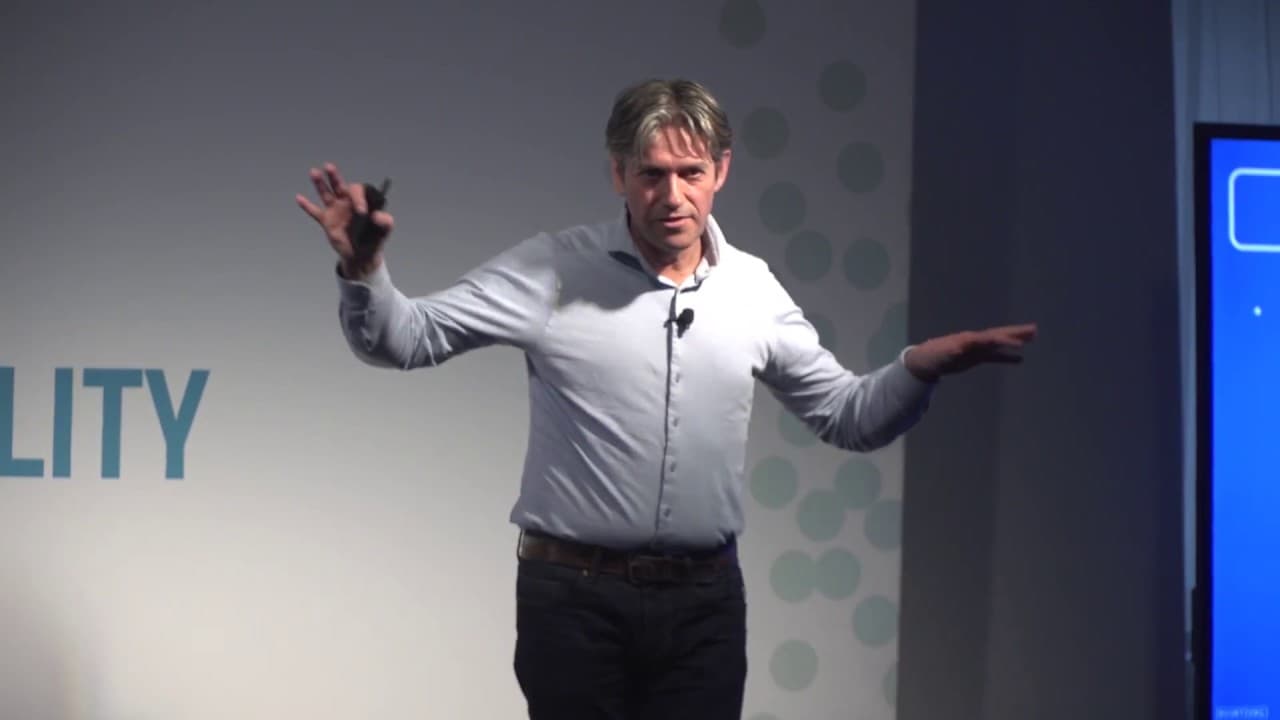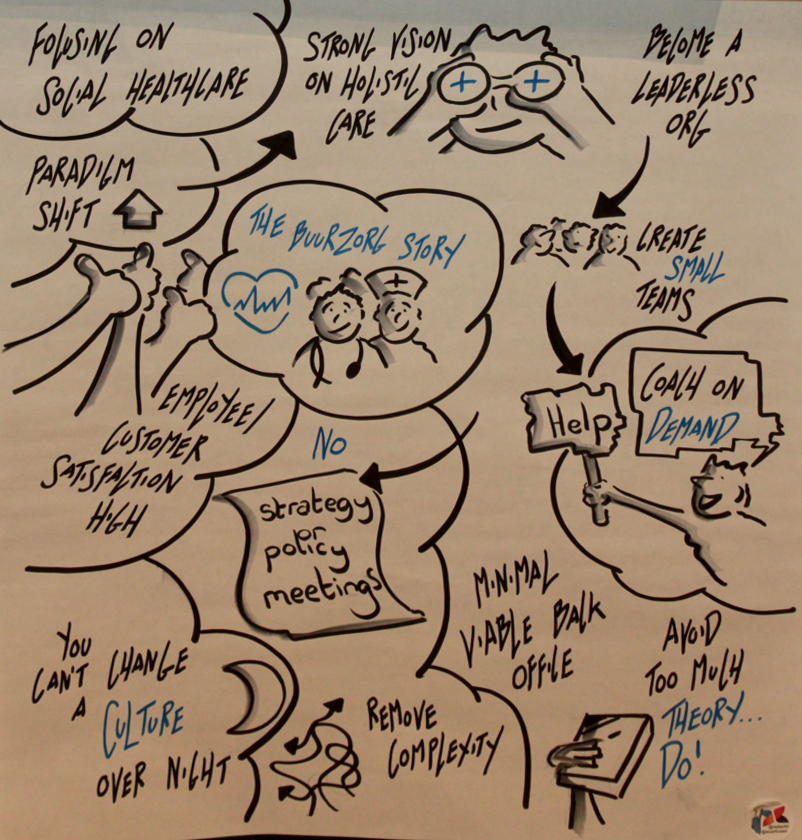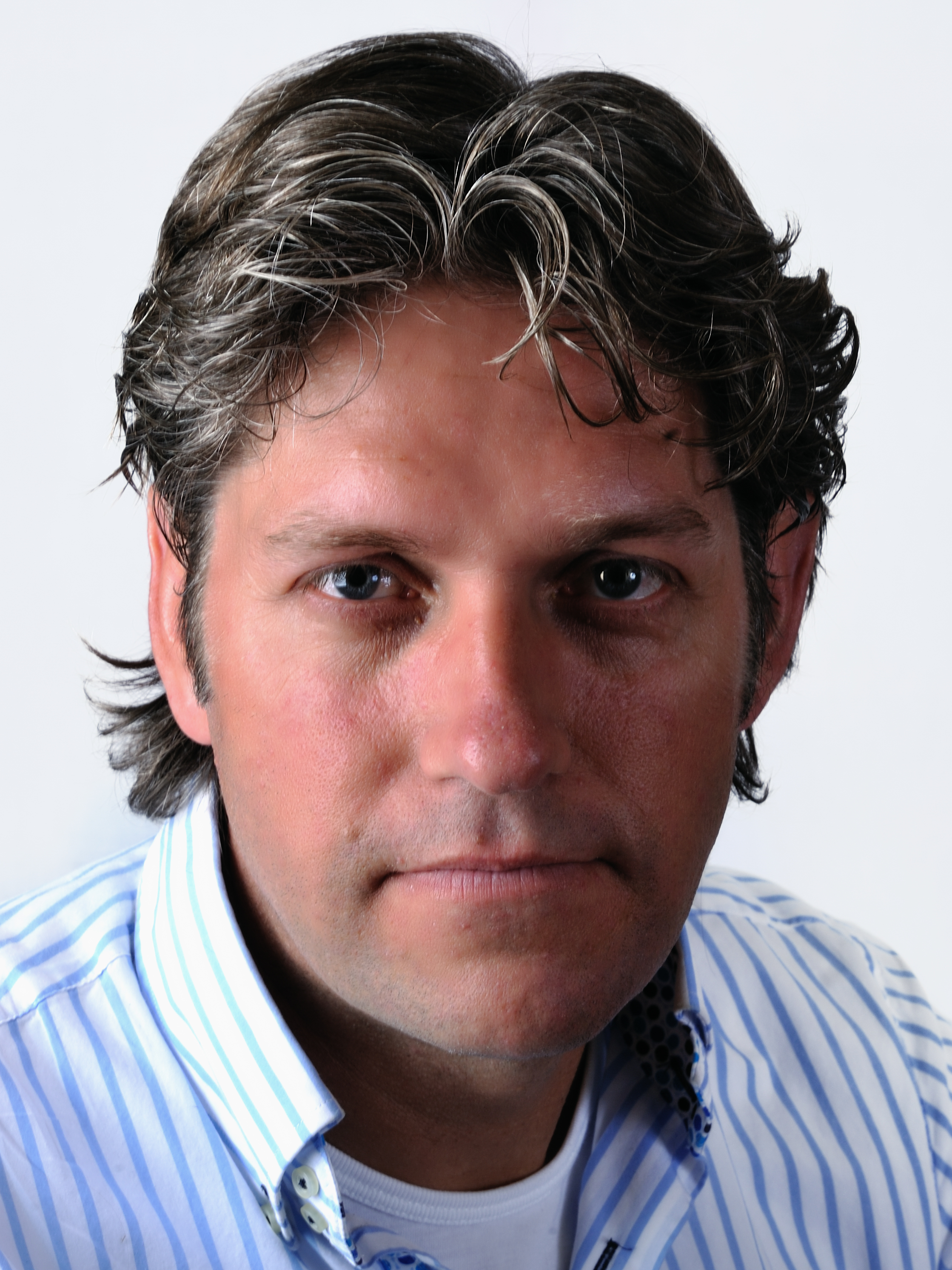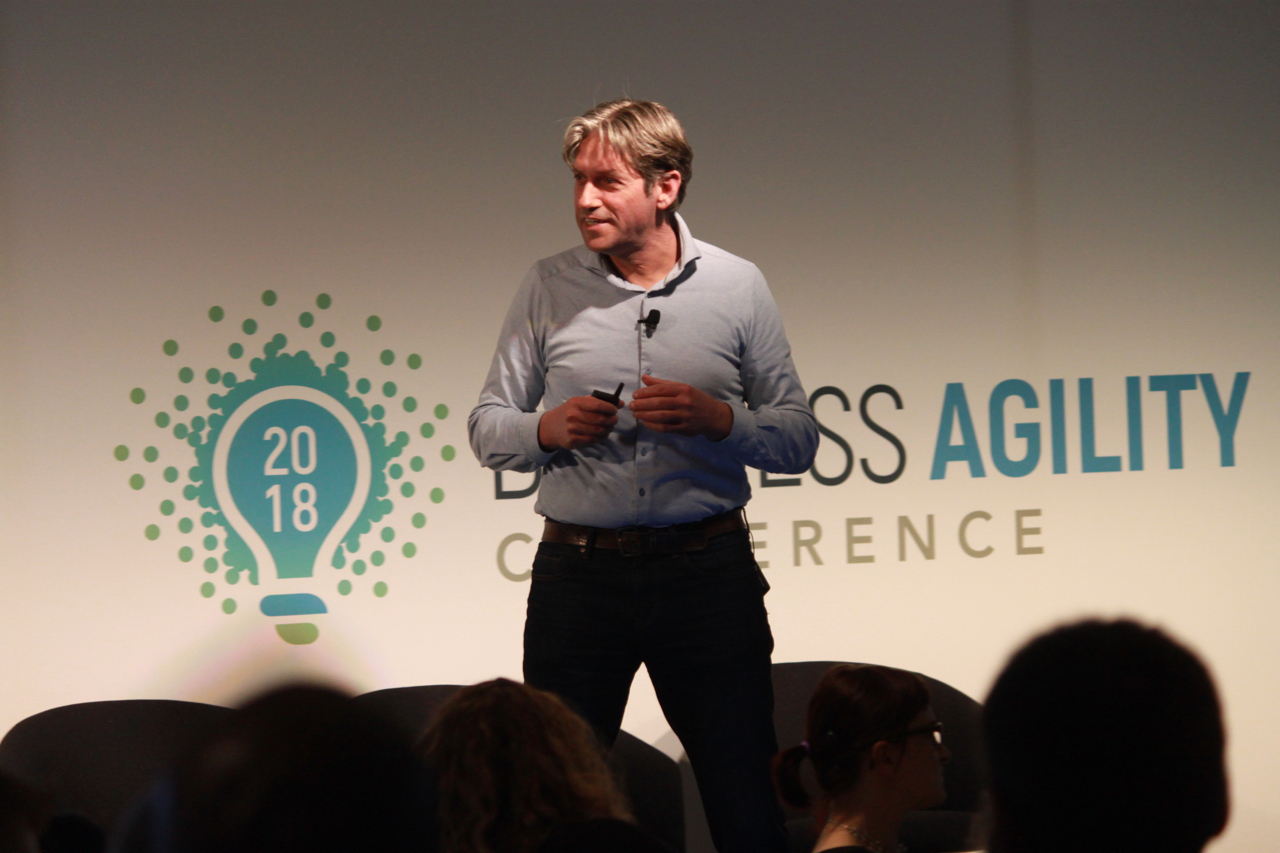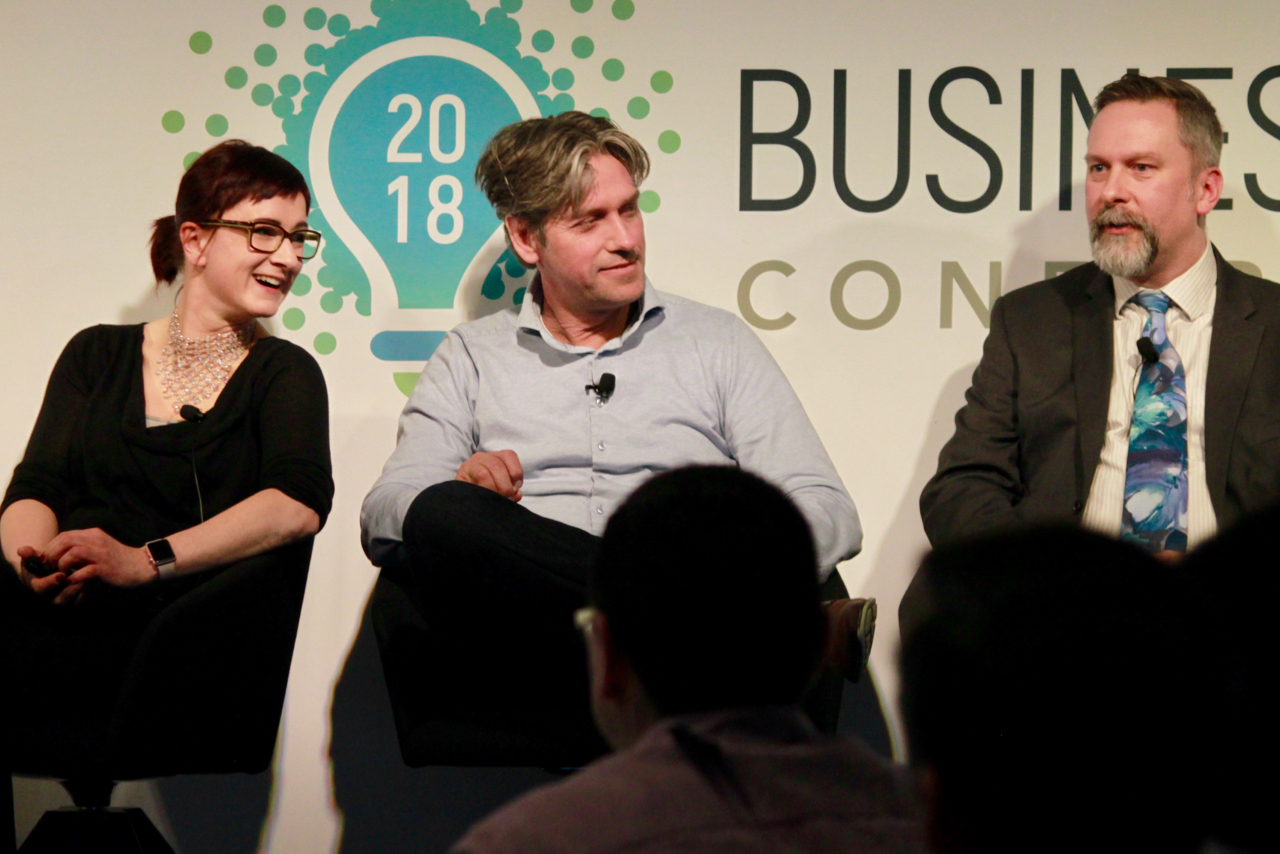There's a yes, I need this one.
I'll take you on my personal journey and a journey with Buurtzorg.
First of all, I want to check if anyone is familiar with the book, Reinventing Organizations from Frederick Laloux. Oh, there's a lot of them. Well, there's a very big chapter written about Buurtzorg for the other ones and for the Laloux readers I give a small quick update.
Our services is focusing on social health care. What we do is community nursing, which is a turnover from three hundred and thirty million euros based on a natural growth. We've never bought companies or anything like that. At this moment. We have about 12,000 employees and serving about 80,000 clients a year, and last year we had our tenth anniversary. So we're really existing, not a startup anymore. We're really there.
First I tried to connect with the thought leaders. I was playing in a band and I really wanted to be a musician. I played at weddings bossanovas. And I really I didn't know that I ran a company, we just had fun, we had weddings and we had fun. And when there was a problem, we just fix the problem. And we had a lot of a lot of fun. But then my parents said, well, you need to go to a university. You've got brains, so you need to learn something. So I studied what I - if you don't really don't know what to do in life, you go to university to study public administration. And that's and that's what I did. Well, 25 years ago, I graduated from university and it was a streaming it's called New Public Management. And me and my fellow students, we should learn the governmental services, how to be more active and more as a company and more focusing on profit.
And I was a consultant back then and I went to CEOs and we told them, well, you shouldn't talk about patients anymore. It's, you should talk about customers and you should think about customer intimacy and think about customer loyalty programs. Because patients is back then. And we also told them, well, don't talk about nurses and nurse assistants anymore because they're human resource and we need departments to manage all these human resources. And we need all people and all kinds of people to to to think of all kinds of protocols and standards for the human resources. And I did a lot of stupid projects back then. You always wanted to redesign processes with public services as it was a business. And we did. We introduced call centers, we introduced workflow management, we introduced customer relationship management. And I did all kinds of projects back then. And it was a time with a paradigm shift, but it didn't feel really comfortable and really good because I never did something for customers and I never did something for the field workers.
I will always be the back office processes and control and planning and all these kinds of projects. And then I met about 15 years ago - well, before I explain a little bit what the effect was of ten years or fifteen years of new public management - we had a disastrous outcome after 15 years because the professionals were very unhappy back then. It was very high sickness rates, productivity was very low. Clients were very unhappy because sometimes up to 30 or 40 different caregivers came at the same house in one week.
I remember this patient telling me, well, I think the whole the whole village has seen my birth this week. But it was a professional business, so it was all out, but actually it was a very bad situation. And then I met Jos de Blok, the founder of Buurtzorg, and he said to me, well, you're a nice guy. I think you're smart with organizations and I.T. but you're doing the wrong things. And I was also thinking that I was doing the wrong things.
This was a good moment. And he had a very strong vision on, on care, on holistic care and how to do good care, the most effective care and the best care. This was his mission and he wanted to start his own company. And back then we puzzled about the concept and we only thought, well, it should be very scalable and it should be attracting the good nurses, good quality nurses. And we really want to get rid of all this management bullshit, because in the company where we worked, we had a lot of meetings and a lot of stuff, and we always looked at each other and said, well, this is going nowhere.
And back then I was very inspired by a book that's called Eckert's Notes. It's a pity for you because it's only in Dutch. That's our secret. But the book was really explaining it was a IT entrepreneur, I think, in the 80s, and he had his I.T. company, and when it became bigger than 50 persons, he split it in two companies. When the two companies became bigger he split it in three and four companies. Was the self splitting idea was really great. And we took it with us with Buurtzorg.
Another book what I read back then was it's called The Starfish and the Spider. I was really inspired by that book also. I think it's in a library somewhere. One of the reasons I was inspired is because it's a small book and I'm not such a reader, but it's really taking you on a trip because there's always a lot of focus on leadership and on top leaders, but it's really one of the title is The Unstoppable Power of Leaderless Organizations. And that's what I really think we are, because we think all the 10,000 of 12,000 nurses are our leaders, and it's not much about you or me.
Well, we started our first teams in 2007, actually, our first team, two nurses, one client. But we had this idea that teams should be never bigger than 12 persons because when it becomes bigger than 12, all kind of organize, organizational stuff comes in all kind of coordination slack.
So we had one or two teams become bigger than 12, just split in two teams. And that's what we did. They had a geographical area from five or ten thousand people and they were fully responsible for the organization, organization of it all. They do their own assessments to do their own hiring and firing. They do their own housing. They do their own connecting to GPs, connecting to hospitals. In fact, they have got their own little small business. But they're all working for the same company.
Well, and then it really was amazing because sometimes we had 100 new nurses a month without even advertising because it was some kind of a magnet, people told each other, well, it's nice to work for Buurtzorg, you can create your own company together with your colleagues. It's doing, it's far better than what we did last year. So it was really amazing to see how not a really, really big plan of creating a big company on natural growth. It was really smart and going very fast. And I remember all the competitors saying, well, that's not going to work for half a year, maybe for a year, but they will fall down and fall over and will struck down immediately. Of course, the turnover grew at the same speed as the clients and the nurses and the teams grew because when a new team started, they bring their own clients and we didn't have to do any public relationships. We don't have any communication departments. It's just the nurses telling the people what to do and they're really entrepreneurs.
Well, I thought it was a wrong chart, but actually I find it really funny. The green part is our nurses and nurse assistants, and then there are 50 people at the yellow, yellow, small bar. It's the back office. And then we've got 21 coaches, maybe 22 at this moment, I'm not sure, and the board is two persons. That's our board.
Well, ever since we've done a marvelous job because our patient satisfaction is a nine on a scale of 10, also for customer satisfaction, for five times in a row, we have been the best employer of the year. Still a very low overhead costs. We're still seeing a lot of new colleagues every year.
Well, I'll tell you a little bit what we do on an organizational level, you've got these teams who are performing as a team, but from an organizational point of view, we monitor the performance. We've got this I.T. platform, we can every week we see exactly how every team is doing, but we are not targeting them, but we just know what's happening. What we also do on an organizational level is the procurement and the following of new legislation, implementing new regulations. And a lot of times we act like some kind of a heat shield or a firewall because there's coming a lot from all kinds of authorities and we just try to fix it before we go it, before we confront the nurses or the teams with it.
When we can find a trick to let them, to leave them in rest with all kinds of new things, then that's what we do, especially a lot. What we do is trying to learn from trends and trying to learn from discussions. We've got this knowledge system and there's a lot of discussion. It's like a Facebook or a Yammer and it's really, really, really working. I seen a lot of Yammer projects, most of the time we call them 'jammer'. 'Jammer' is the Dutch word for "it's a pity" because when you haven't got a social culture, then it's very difficult to get a social community alive.
But for us, it's really our core business is our community and we are really learning from discussions on the Web. What we also do is stimulating innovation and learning on a organizational level, and what we do is coaching on demand. Teams have their own problems and they try to fix the problems themselves, and sometimes when they want to, they can ask a coach. But a coach is never deciding; coaches only giving some different opportunities, different choices and you have to make their own decisions. But they can ask a coach.
And what we also try to do is make the quality system on an organizational level because we've got all kinds of authorities to check quality and so on. But it's all a really tight fit in the I.T. platform. What we don't do, what we don't do, what we don't do: there's no strategy meetings. In fact, there are no structured meetings at all. There's a lot of calling with Jos and a lot of calling with other colleagues and try to understand what's going on. We've got the web where everything is discussed and everything is cleared out. There's no policymaking, with just one mission and that is delivering the best community care ever. And there's, actually there's no kind of formalized management of everything. We haven't got an I.T. department, we haven't got a HLM department, we haven't got marketing or all kinds of departments.
Well, there's deep dive session, where we can discuss all kinds of deeper, all kinds of topics, but I'll take you on a little journey.
I was asked, I think, six years ago, well, Buurtzorg, it's easy when you start a new company. Well, that's then it's possible. But when you have got a company, it's impossible to change because we are already doing the wrong things or all the things, and it's impossible to change.
Well, and I took one CEO and we we made an arrangement and I reorganized her business and it was really successful, but it took two years to make it happen. And I will briefly explain some things.
I really often hurt because there are a lot of copycats of our business model and a lot of copycats of Buurtzorg. I think these are funny remarks I encounter. The most beautiful one is: "our people aren't suited for aren't suited for self organization. All the good nurses went to Buurtzorg and we, were, we've got the leftovers". All the CEOs I met said, "well, we want the best of both worlds. I know it's the self organizing teams and we don't trust them. We do, we've got to do it together. It's somewhere that together organizing teams." OK! Other ones think, "well, I looked at the model, but it's not so difficult. It's just fire, just fire the management and tell the teams what they've got to do and they're on their own set. That's not so difficult. So I don't see the problem."
And often it's in combination with, with the organization who think that it can be done without restructuring, restructuring the back office. That was my biggest learning when I transformed the other organization. The real struggle was within the back office. In the back office, there were a lot of islands and there were a lot of CXOs, and they were all trying to make their department more important than it really was.
And the last one, "it won't work is just a hype." Now, it's a hype for ten years now, but maybe we will see. I briefly go into - I've got three minutes left. So answers of these remarks, what I encountered with this other company. When you start to move Agile or whatever, Teal, or Holocracy or Sociocracy or whatever, start with the innovators and don't start with the people who don't want change.
I had an implementation with three teams within an organization of 60 existing teams, and with three teams who really wanted to change. And we put them in charge of the transformation and they really did a good job and they really told their colleagues, well, it's a fun way to work this way and please let's go on and let's move on and let's scale up.
In the end, you've got a problem with the laggards. The company I transformed, in the end there were 80 people in the backoffice fired because there was no job left for them. Well, that's not agile. That's also agile. Sometimes you really need to restructure.
The other one, we want best of both worlds. I don't believe in that. When you want to go self organizing teams and you've got to do it all the way and not somewhere in between. The only thing I think what you can do is only trying to understand what's happening in your community and in your teams. Don't manage the new direction, but just sit down and watch and serve and guide them and try to cut complexity. I've seen a lot of organizations with a lot of complexity, all kinds of procedures, all kinds of forms, all kinds of standards, and nobody knows they're even existing.
Um, about the easy job, I think it's really difficult when you haven't got a social culture to change in a way in a Teal-ish organization, when there's not a culture of social, social culture, you can change your culture within a week. You can't say, well, next Monday we've got a new culture. So it really takes time to change your organization. And my personal experience was that the most difficult part was changing the back offices because they're always try to tell them that the way it's organized now, it's the best way. Some do think that it's some kind of energy, but that's not true also. You need a very clear framework of what is possible and what's not possible, and what what you can do and what you can't do.
Um, the thing I was doing within this other organization, we had a, in Agile I.T it's called a "minimal viable product", but we had a minimal viable backoffice. We said we had to six, seven persons from backoffice administrations and they were the single point of contact for all the nurses. So the nurses didn't have to go to all kinds of administrations all kinds of places, they just had their one minimal viable backoffice for all their questions, and it really helped. It can be done without restructuring.
Well, I already mentioned a little bit about that. I think there's a lot of complexity in organizations was really, what really is not needed. And it's very difficult to make things...less complex. I think it's the most complex thing to do is to make the world less complex, but it's really needed because there's a lot of, a lot of complexity was not really needed. When you look at it a different way and you have a right and clear vision and mission.
The last one - oh, running out of time - "It won't work. It's just a hype." Well, we'll see. I'm only here, but my personally, I seen a lot of organizations struggling with Agile, but they love to stuck on the theory and I think be like Nike. Just do it. Just give an example. Just try to do it. And we are not really trusting your own organization. Well just start a new company outside your company and, and look what's happening. And when it's really working, then you can move over, but stop theorizing and thinking and theorizing.
I know it's easy and comfortable, but sometimes you just have to hand over and just let it go. And that's, most of the time it's very uncomfortable because you are out of control and out of plan. So. Well, that's actually what I had to tell. Thank you for your attention.

